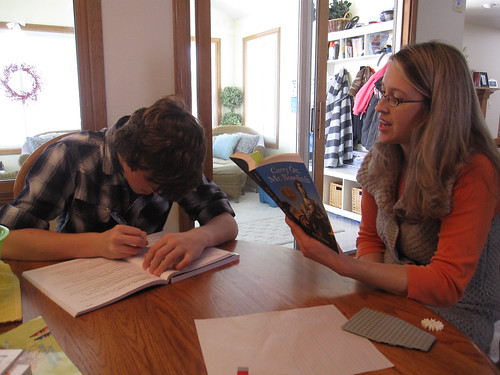When I grew up, homeschooling wasn’t talked about. It may seem like there are no other options besides public school or expensive private school. The Internet provides you with many great resources, and you should keep reading this article to find out more information.
Check out state laws regarding homeschooling. State regulations and rules vary when it comes to the number of days your kids must be homeschooled. The majority of States have a standard curriculum, but you also might have to put together something on your own. For the sake of convenience, you ought to align your homeschooling schedule with the district’s schedule.
Kids are full of energy and do not have very long attention spans so keep this in mind when you are homeschooling. If they simply must read for hours at a time, learning will become quite stale. Allow them the opportunity during the day to run wild or relax a bit. A little break will be good for everyone!
Don’t restrict yourself to textbooks! Keep the subject interesting by referencing more diverse and current sources. Encouraging them to read an array of different material can really help them to become more well-rounded. This will help them learn skills that can last forever.
Working with other homeschooling families near by to plan field trips can be a very effective strategy. That is fun, and your kids can socialize with other children in similar situations. You can also save some money by getting group rates at different locations.
Give the kids your housework, or hire someone. It is going to be difficult for you to take care of everything on your own. Cleaning, cooking, grocery shopping and taking care of everyone can wear you out fast. Don’t feel bad about accepting help.
Many children learn best when presented with tactile assignments and lessons that require a high level of participation. For instance, when learning about foreign cultures, consider cooking traditional recipes from those areas. If you are studying an era, create some costumes or some tools from that era. Sushi, schnitzel and pasta can go hand in hand with a unit on the countries involved in World War II. This will make learning more fun and help your children understand which resources are available in other countries.
Make sure you do some research before jumping into homeschooling. A lot of information is available on the web to help you determine if homeschooling is the right decision for you and your children. Don’t romanticize the decision; it is important to recognize the time, energy, and money that are required to homeschool a child.
Discover all the local laws and rules you must follow. Regulations vary from state to state; some require formal registration, while others just require certain testing procedures. If your state requires it, make sure you notify your school district that you are homeschooling.
Write down a list of the pros and cons of homeschooling and public schools. Use your list while you develop lessons in order to make certain you are filling the gaps you saw in public school education. It can be a checklist of do’s and don’ts for homeschooling. Make sure that you store this list and look back at it when necessary.
Are you homeschooling multiple kids? Take the time to evaluate the work involved and whether you can realistically do it before just jumping in. By having rules, you will be able to teach without interruptions. By paying attention to your shortcomings in areas of discipline and response to behaviour, you can be better able to help your children succeed.
Technology can play an important role, but it should not be your sole crutch. Connections to the web can sometimes go down, and sometimes you cannot connect when you really need to use it. Make sure you have backup lessons so that you don’t lose valuable time with your children.
Use a unit study method when teaching. This method allows you to focus on one thing at a time. This way, you have the ability to study each topic in depth. One such unit study might be classical music. Take a month or two to study this topic. When the unit is over, you can take them to a live performance. Your child will remember this fabulous experience for a lifetime.
Use the outdoors as a teaching tool while going on nature walks. You can use the walks to teach in various ways. Young children can observe the different plants and collect leaves. You could even get them to try to identify tree types. Older ones can do some research on the different ones you come across. Take photos as a way of preventing them from disrupting the environment.
Now that you know more about homeschooling, you can put the information to good use. These ideas are a great place to start if you haven’t yet begun homeshooling. It takes proper advice and inspiration to make lessons that work.

